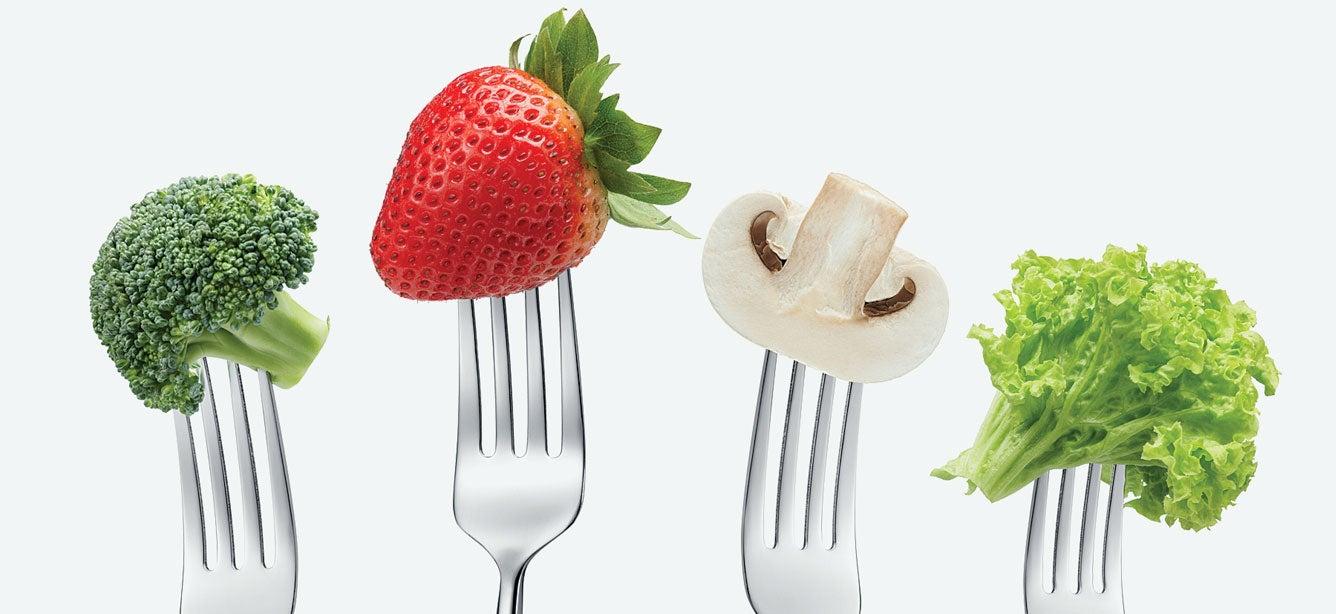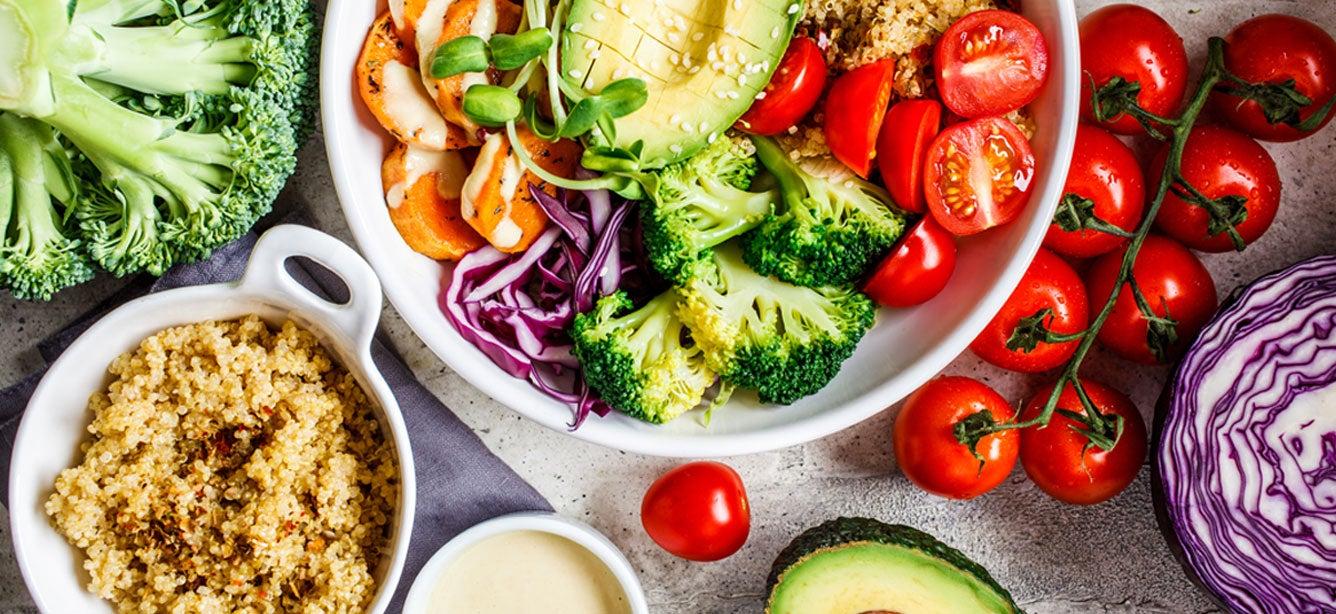Eating Well After 50: 5 Ways to Make Healthy Food Choices
4 min read

Related Topics
After 50, it’s more important than ever that you are eating well to get adequate nutrients. As we age, our weakening immune systems and other factors make us more prone to chronic conditions, falls, hospital stays, and illness. Proper nutrition can help to prevent—or diminish the dangers—of these age-related risks. Use the tips below to help make healthy eating choices this year, even if you’re on a tight budget.
1. Know what a healthy plate looks like and follow recommended servings
Filling your plate with the right food is key, especially if you're age 50+. Healthy eating means a focus on the major food groups—fruits, vegetables, protein, dairy, and whole grains—and the recommended daily serving size for each. The MyPlate Plan, created by the U.S. Department of Agriculture (USDA), is a free resource that helps you see how the food groups should stack up based on your sex, height, weight, and level of physical activity.
2. Choose food based on important nutrients
Every bite counts as you age, so fill your body with vitamin and mineral-rich foods—and not empty calories. Some of the most important nutrients you need for healthy aging include:
- Protein
- Vitamin B12—Foods high in B12 include fish, shellfish, lean red meat, low-fat dairy, cheese, and eggs.
- Folate/Folic acid—Foods high in folate include dark leafy greens, asparagus, broccoli, citrus fruits, beans, seeds, and nuts.
- Calcium—Foods high in calcium include low-fat milk, kale, sardines, broccoli, yogurt, and cheese.
- Vitamin D—Sources of high Vitamin D include fish, shellfish, low-fat milk, orange juice, and the sun.
- Potassium—Foods high in potassium include avocado, spinach, sweet potato, yogurt, coconut water, and white beans.
- Magnesium—Foods high in magnesium include dark leafy greens, seeds and nuts, fish, beans and lentils, and brown rice.
- Fiber—Great sources of fiber include avocados, raspberries, blackberries, artichokes, peas, beans, lentils, nuts, and seeds.
- Omega-3 fatty acids—Foods high in Omega-3 fats are flaxseed oil, fish and fish oils, nuts, shellfish, soybeans, and spinach.
3. Stay hydrated
Water is an especially important nutrient because many medications can increase your chances of dehydration. Plus, one of the key minerals we need, fiber, absorbs water. That means you need to drink fluids consistently throughout the day to stay properly hydrated. The National Academy of Medicine recommends a daily fluid intake of about 13 cups and 9 cups for healthy men and women age 51 and older, respectively. All sources of fluids—drinking water, food, and beverages—are counted in these recommendations.
4. Read nutrition labels
Be a smart shopper. It’s always best to buy fresh protein, dairy, and produce when you can. But when you opt for packaged foods, look for items that are lower in fat, added sugar, and sodium. Buy spices instead of salt to season your food, and choose a natural sweetener, like Stevia, instead of sugar.
Also, pay close attention to whole grain labels. If food has the “100% whole grain” stamp, it means that each serving contains at least a full serving or more of whole grains, while the basic “whole grain” stamp means that each serving has at least half a serving of whole grains per serving. Learn more about whole grain labeling. You can take the guesswork out of a balanced diet by subscribing to a meal delivery service (e.g., HelloFresh or Home Chef). Meal delivery kits contain pre-portioned meals and make reading labels a breeze.
5. Stretch your food budget
Perhaps the biggest obstacle for eating well is a lack of financial resources. But you don’t have to make trade-offs—like opting for canned food over fresh—in your food budget. There are state and federal programs that can help you pay for groceries, including the Supplemental Nutrition Assistance Program (SNAP) and food delivery services like Meals on Wheels. SNAP also now covers eligible food items purchased from most online grocery delivery programs, like Amazon Fresh. However, they may not cover the delivery fee. Visit BenefitsCheckUp.org to learn more and get help applying to SNAP and other valuable benefits programs.
For more information on making healthy food choices in older adulthood:
- Discover strategies to help older adults boost their nutrition and overcome common barriers to eating well.
- Download our infographic, "6 Ways to Eat Well as You Get Older," to share with the older adults in your life.



